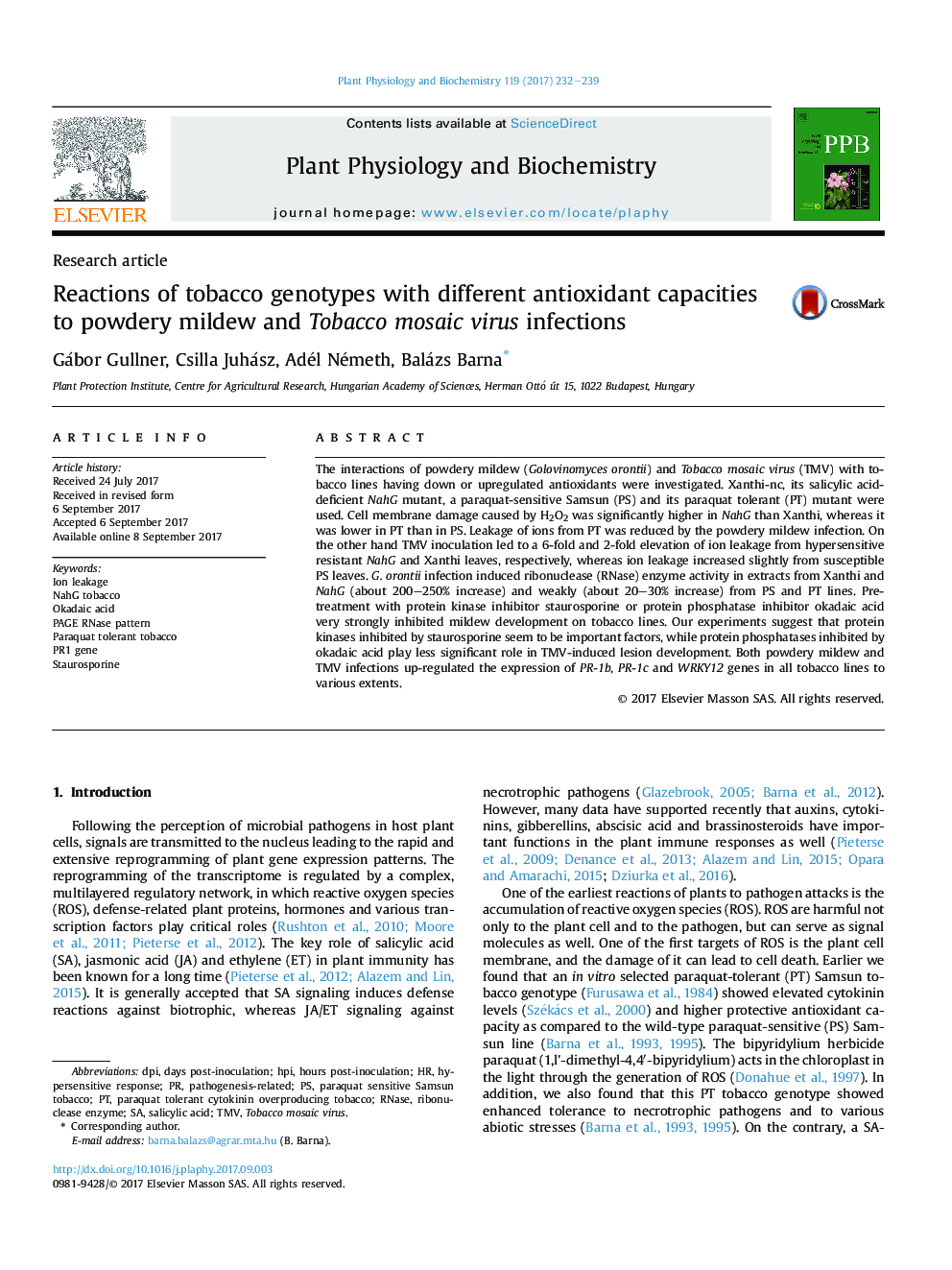| Article ID | Journal | Published Year | Pages | File Type |
|---|---|---|---|---|
| 5515307 | Plant Physiology and Biochemistry | 2017 | 8 Pages |
â¢TMV induced 2 fold on Xanthi-nc, 6 fold ion leakage from NahG tobacco leaves.â¢Staurosporine and okadaic acid inhibited powdery mildew mainly via plant metabolism.â¢Staurosporine significantly inhibited TMV induced lesions.â¢G. orontii raised RNase activity by 200-250% in Xanthi and NahG tobaccos.â¢G. orontii and TMV up-regulated the expression of PR-1b, PR-1c and WRKY12 genes.
The interactions of powdery mildew (Golovinomyces orontii) and Tobacco mosaic virus (TMV) with tobacco lines having down or upregulated antioxidants were investigated. Xanthi-nc, its salicylic acid-deficient NahG mutant, a paraquat-sensitive Samsun (PS) and its paraquat tolerant (PT) mutant were used. Cell membrane damage caused by H2O2 was significantly higher in NahG than Xanthi, whereas it was lower in PT than in PS. Leakage of ions from PT was reduced by the powdery mildew infection. On the other hand TMV inoculation led to a 6-fold and 2-fold elevation of ion leakage from hypersensitive resistant NahG and Xanthi leaves, respectively, whereas ion leakage increased slightly from susceptible PS leaves. G. orontii infection induced ribonuclease (RNase) enzyme activity in extracts from Xanthi and NahG (about 200-250% increase) and weakly (about 20-30% increase) from PS and PT lines. Pre-treatment with protein kinase inhibitor staurosporine or protein phosphatase inhibitor okadaic acid very strongly inhibited mildew development on tobacco lines. Our experiments suggest that protein kinases inhibited by staurosporine seem to be important factors, while protein phosphatases inhibited by okadaic acid play less significant role in TMV-induced lesion development. Both powdery mildew and TMV infections up-regulated the expression of PR-1b, PR-1c and WRKY12 genes in all tobacco lines to various extents.
